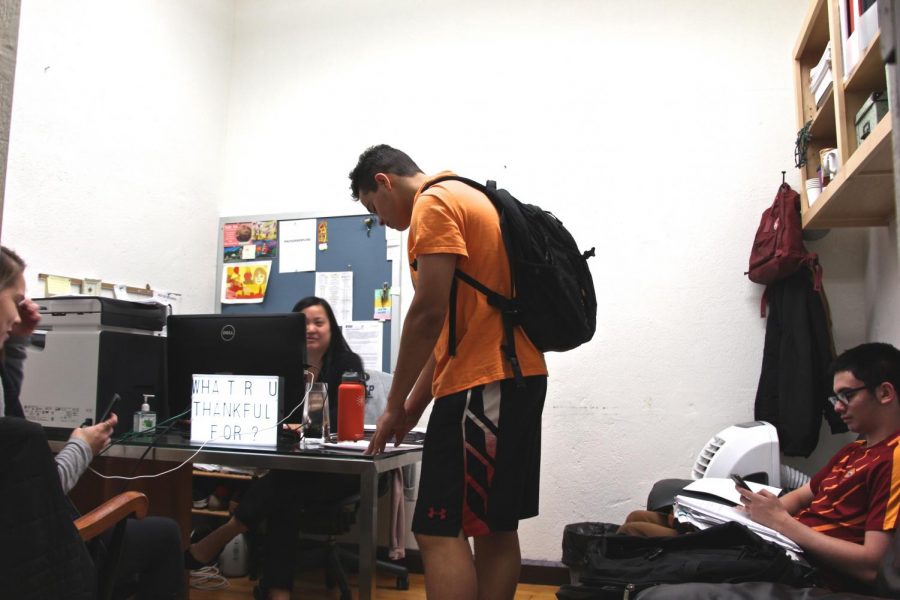The Early Bird Gets the Early Word
Students gather in Ms. Lee’s office to discuss the progress of their applications.
November 15, 2017
As the class of 2018 finalizes their college lists and applications, something stands out. Over 70 percent of this year’s graduating class is applying early decision (ED) to a college, as opposed to the 20-30 percent that has applied ED in past years.
Applying ED to a college requires that a student submit their college application by November 1 or 15, depending on the school, and if the student is accepted into the college, they are contractually obligated to attend that school. This is different from Early Action (EA), in which the student is admitted early into the college, but may choose to attend another school. Applying ED to a school allows students to be considered in a smaller applicant pool and demonstrate their commitment to their number one school.
ED has been a very prevalent part of every senior’s application to college. The appeal of ED is that it allows a student to commit to a school they love, and also allows a student to know where they are going to college by mid-December. The steep increase in the number of Poly students applying ED has been attributed to Assistant Head of School Kyle Graham, who is a strong advocate of students applying early. Graham says that Early Decision acceptance rates are almost universally higher than Regular Decision.
Because the odds of ED are higher than those of regular decision, most seniors had to choose their ED as early as October 16th, almost two weeks before many students applied early.
Many students have been enthusiastic about the idea of committing to their first choice school and feel this is a strong strategic choice. Trevor Núñez ’17, who is currently a freshman at the University of Pennsylvania, said, “College guidance advocated my applying ED, and I remember Mr. Graham highlighting the opportunity costs of not applying early.”
Senior Audrey Barnett said, “I firmly believed that I didn’t want to use ED as a strategy to give me a better chance of getting in somewhere, if it was not my top choice.” However, Barnett said that she found her number one school, “and it seemed like such a smart decision to apply ED.” Indeed, as Graham points out, “Colleges receive, on average, 9.5% of their applicant pool via Early Decision, yet they fill an average of 45% of the seats in their first-year classes via Early Decision.”
However, this choice is not to be taken lightly. As Graham points out, “If a student is admitted Early Decision, they are obligated to withdraw other applications and attend the school to which they are admitted ED.” This choice is one that a student will have to commit to for the next four years. Upper School Dean Sarah Bates said that “If you’re not sure [about applying early] the thought of being contracted into a place could potentially feel uncomfortable.”
As Eric Muoio ’17, a freshman at Fordham University, said, “Poly does an okay job at guiding students through the process, but they shouldn’t and ultimately can’t tell the student where they should consider EDing because it’s entirely personal.”
Many Poly students revealed their discomfort with the idea of committing to a school that they are not totally dedicated to in order to guarantee admission. The idea of the “strategic ED” has been rebuked by many students, including senior Liam Harvey.
“Unfortunately, the reality is students are swayed many times to put colleges on their list that they personally don’t like,” Harvey said. “The Deans often disregard fit in order to send kids to the best colleges ‘on paper.’”
However, as the ED deadline passes, and students eagerly await college decisions, students have time to reflect on the college process. While not every student is guaranteed entrance into their college of choice, December will surely be a time of celebration for many seniors.



























ana • Nov 16, 2017 at 10:20 am
nice